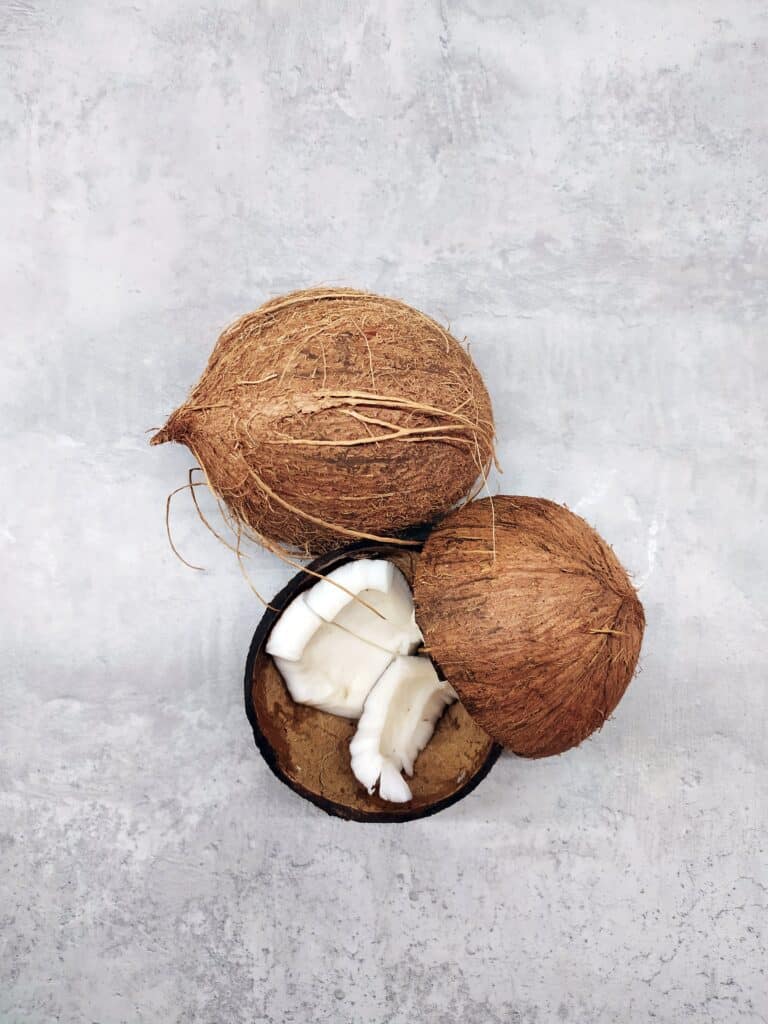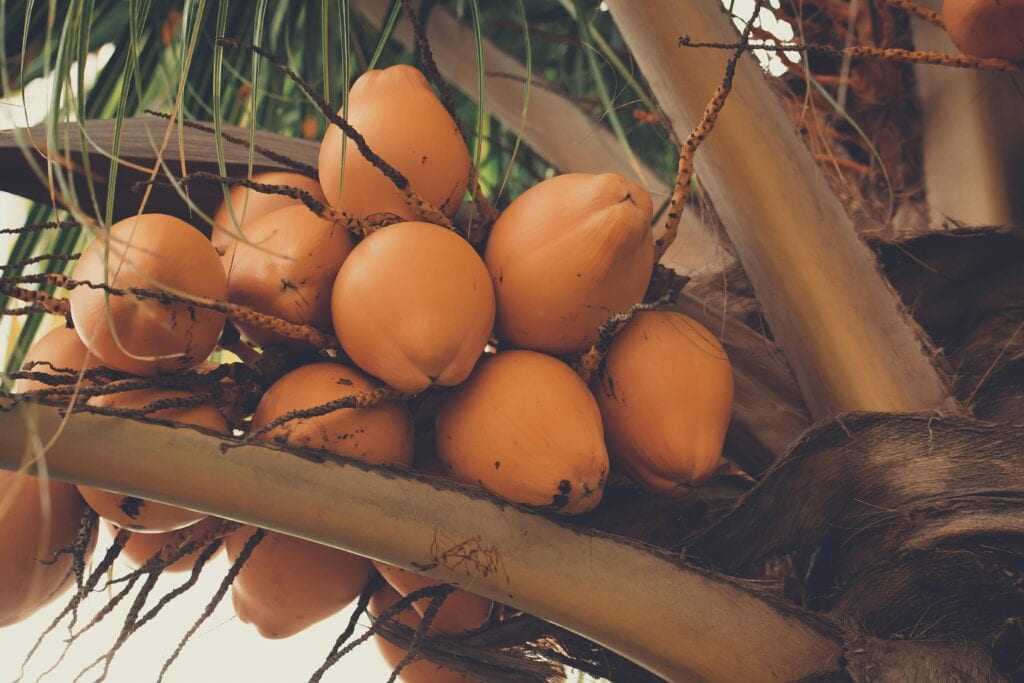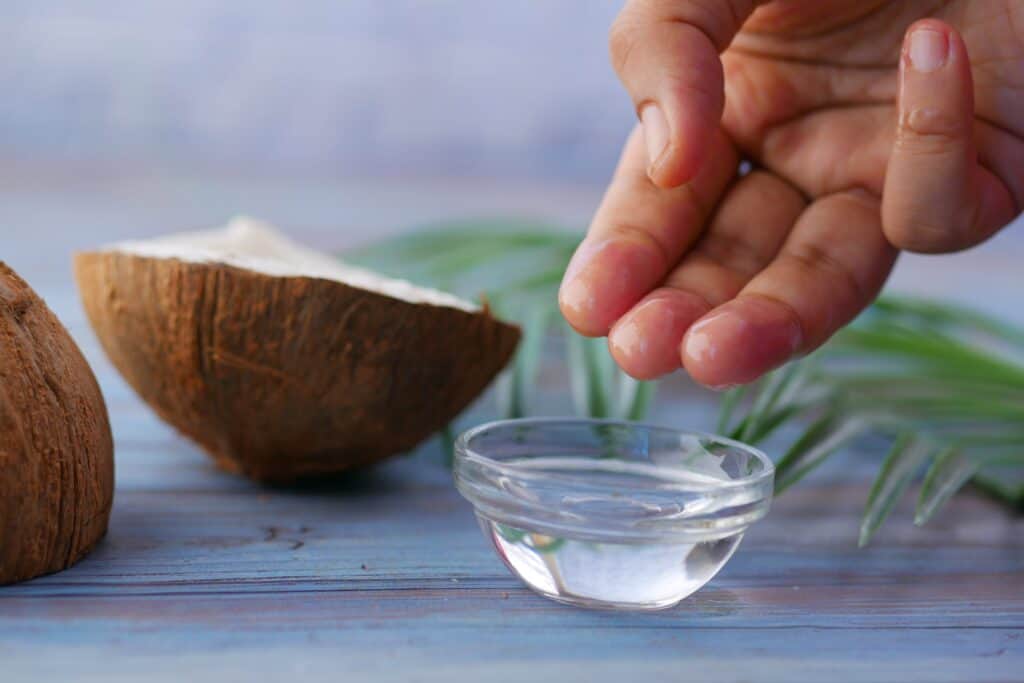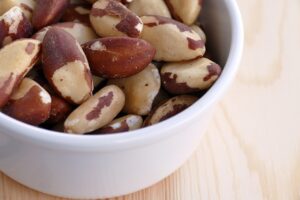
In prehistoric times, the water content of the immature coconut fruit was more important as a drink than was any part of the mature nut as a food. In recent history, the emphasis has also been on the nonfood use of coconuts as oil. The oil extracted from the kernel of the ripe coconut is an industrial raw material for products ranging from soap to explosives. From prehistory to the present, coconut has served many human communities around the tropics in a variety of ways. In 1501, King Manuel of Portugal itemized some of its uses at a time when the coconut was first becoming known in Europe.
The King is quoted as saying, “From these trees and their fruit are made the following things: sugar, honey, wine, vinegar, charcoal, and cordage … and matting, and it serves them for everything they need. And the aforesaid fruit, in addition to what is thus made of it, is their chief food, particularly at sea”. Even the King recognized the significance of the history of coconuts.
Difficulty With Coconut History
Unfortunately, it is not possible to provide as much information as one might want on the coconut in prehistory. This is because heat and humidity work against the preservation of fossils, and thus, there is a dearth of archaeological materials, coprolites, and biological remains on tropical seashores where the coconut palm is native. Coconut residues do not accumulate because the palm grows and fruits year-round. This makes crop storage unnecessary, and, in fact, because of their high water content, coconut seednuts cannot be stored; they either grow or rot. The tender, or jelly, of the coconut, is even less likely to survive in storage.
However, the sweet liquid in the immature fruit is safe to drink, whereas groundwater may be saline or contaminated. Many view it as a delightful drink. They will transport the coconuts by land or by sea. In short, coconut is potable, palatable, and portable. Unlike drinks that are bottled, canned, or otherwise packaged, coconuts are sustainable and recyclable. People have suggested it as the “milk bottle on the doorstep of mankind.” The coconut could have played a significant role in the diets of our human ancestors before agriculture.
Millionaire’s Salad

Although not strictly a green leafy vegetable, coconut heart of palm can be compared with blanched leafy vegetables, such as endive, celery, or globe artichoke. Many have called it the “millionaire’s salad” on the assumption only the rich can afford to fall an entire palm. You can eat palm hearts best as fresh, but one can also cook, can, or pickle them.
Other palms can also be employed in this manner; indeed, with some palm species, harvesting the heart of a palm is a commercial operation. Many think one could efficiently commercialize palm heart for the coconut palm, especially in tropical coastal areas where tourism has replaced indigenous agriculture. You can use one coconut heart for as many as 40 side salads. Many also utilize the over-aged palms, overgrown seedlings, and sprouting weeds in neglected groves for this exact purpose. It would even be practical to plant them at high density for sequential harvesting.
Farmers, however, are reluctant to cut down coconut palms. They refuse to cut the palm, even over-aged palms. They do not thin out palm stands that are too dense to be productive, and they usually ignore overgrown seedlings. All this may be attributable to a past in which the coconut palm was potentially the sole surviving food plant after a tidal wave or hurricane. Thus, the notion persists among some that cutting down a coconut palm threatens future life support. Some communities plant coconuts to celebrate a birth. They will commemorate human life and view jeopardization if the palm dies. Liberians would eat the palm hearts to feed their starving population only as a last resort in their civil war. This was the only case where reluctance to cut down the coconut trees.
Apple for the Teacher
Botanically, the coconut fruit is a drupe. Plums, peaches, and cherries, which are also drupes, have edible outer parts to encourage dissemination by animals. Other palms as well, particularly the date, have soft, sweet, and edible fruit, but the coconut is different because the outer covering, the husk, is generally bitter and stringy when young and dry and fibrous when mature. However, some rare individual coconut palms have an edible husk that is less fibrous, spongier, easily cut, and sweet to chew like sugar cane.
The coconut “apple” is, botanically, the haustorium of the germinating seed. The haustorium begins to develop at the earliest stage of germination, even before the shoots or roots emerge through the husk. Coconuts harvested in this condition are suitable for domestic purposes or for second-grade copra but generally not for desiccated coconut. Often, the apple is put aside to eat. It is slightly sweet and slightly oily, with a cottony texture. As the endosperm lasts up to 15 months during germination, a large apple is found in well-developed seedlings. Coconut production can often be intermixed into modern day life in some areas. In places where coconuts grow, children walking to school may grasp the leaves of a sprouted seednut and uproot it. Still holding it by the leaves, they swing it against the trunk of the nearest mature palm to split the husk and crack open the shell. Then they pick out and eat the apple.
A Special Meal In The History Of Coconuts
An unusual form of the mature coconut has a jellylike endosperm. You can eat this fresh, scooping it with a spoon from a freshly cracked coconut. Locals call this Makapuno in the Philippines. They view it as highly esteemed. Locals in India and Sri Lanka call it Dikiripol or other similar names. People in Indonesia and the Solomon Islands have reported recognizing this as well. Many find the most interesting fact to be the embryo can only germinate under the artificial conditions of a tissue culture laboratory. A coconut with aromatic endosperm, favored in Thailand for drinking and preparing a cooked dessert, is also known in Malaysia and Indonesia.
Lovely Bunch of Coconuts
Europeans have treated the coconut as humor in the past. They popularized their music hall song “I’ve Got a Lovely Bunch of Coconuts.” Historically, it was first introduced to Europe as Nux indica, or the nut from the Indies. They possibly applied this as a generic name to the shells of all other palms that survived the long journey overseas. They may have referred this to nutmegs as well. Many kept these nuts and shells as novelties and used them as ornaments.
Friar John of Montecorvino (around 1292) described Nux indica as “big as melons, and in color green, like gourds. The book Desmond 1992 quoted that their leaves and branches are like that of a date palm. When the Portuguese sailed the Indian Ocean in 1499, they brought back samples. They were then able to distinguish the coconut from other palm fruits and from nutmeg.
After they remove the fibrous husk, they can split the brown, hard-shelled nut to expose the kernel. Humans treat coconuts differently than almonds, for example, even though they both have similar features. Health merchants and vegetarians do not treat the coconut like a nut because of its size. They instead offer slices of coconut chips in packets. Merchants in England will split open coconuts and hang them out to feed birds, especially in winter.
Oils, Fats, and Food Fish and Chips
Coconut oil is most certainly a part of the diet in the countries where it grows. But equally importantly, in those countries, it may be an unguent for the hair, an emollient for the body, a rust inhibitor for iron, and a fuel for lamps. Its first industrial use in Europe was as a lubricant in textile mills, although it subsequently became essential to soap makers. Some of the latter are among today’s industrial giants, and they still import coconut oil for the excellent lathering properties it imparts. It is interesting to note, however, that when soap manufacturers began using coconut oil, they unintentionally fostered the fish and chip shop.
This famous institution, the forerunner of all fast-food takeaways, became part of the social fabric in Britain (Harries 1988). Fish and chips date from the middle of the nineteenth century. Before then, local “soap-boilers” accumulated animal fat as the primary ingredient of laundry soap. But animal fat was chiefly available in the winter months when animals were slaughtered if they could not be fed, whereas coconut oil was available year-round from overseas colonial possessions that had an abundance both of the crop and of cheap labor.
More Uses In The History Of Coconuts
Whether for soap or for cooking, coconut oil was particularly acceptable because it was convenient to handle. In a cool climate, it does not even look like oil; below 20° to 26° C, it becomes a greasy, somewhat crystalline, white or yellowish solid fat. In other words, outside the tropics, coconut oil becomes solid and resembles animal fat. It was also a good substitute for animal fat because there was no risk of infectious disease in its production.
The virtues of coconut oil were extolled at the beginning of the twentieth century in an advertisement for “Nut Lard”:
An absolutely pure vegetable fat extracted from the coconut. It is sweeter than ordinary lard or butter and cheaper than either. White and odorless, it does not turn rancid and is infinitely superior to ordinary lard for all culinary purposes. Many can use it with the most delicate dishes without altering the natural flavor of the dish.
Coconut oil history is particularly intereting in it’s complexity. It was in the nineteenth century that such flamboyant advertising became a significant factor in marketing. In particular, industrial soap makers started large-scale advertising of their products, with the prepackaged brand names that still survive today. Such competition put the small, local soap boilers out of business, and when they could no longer sell soap, they looked for something else to do with their existing equipment – deep copper pans over open fires. They had previously used the coconut oil for soap. They now put it to work frying chips. This shows all the complex uses in the history of coconuts.
Blog Assisted By rzwilliams.com




